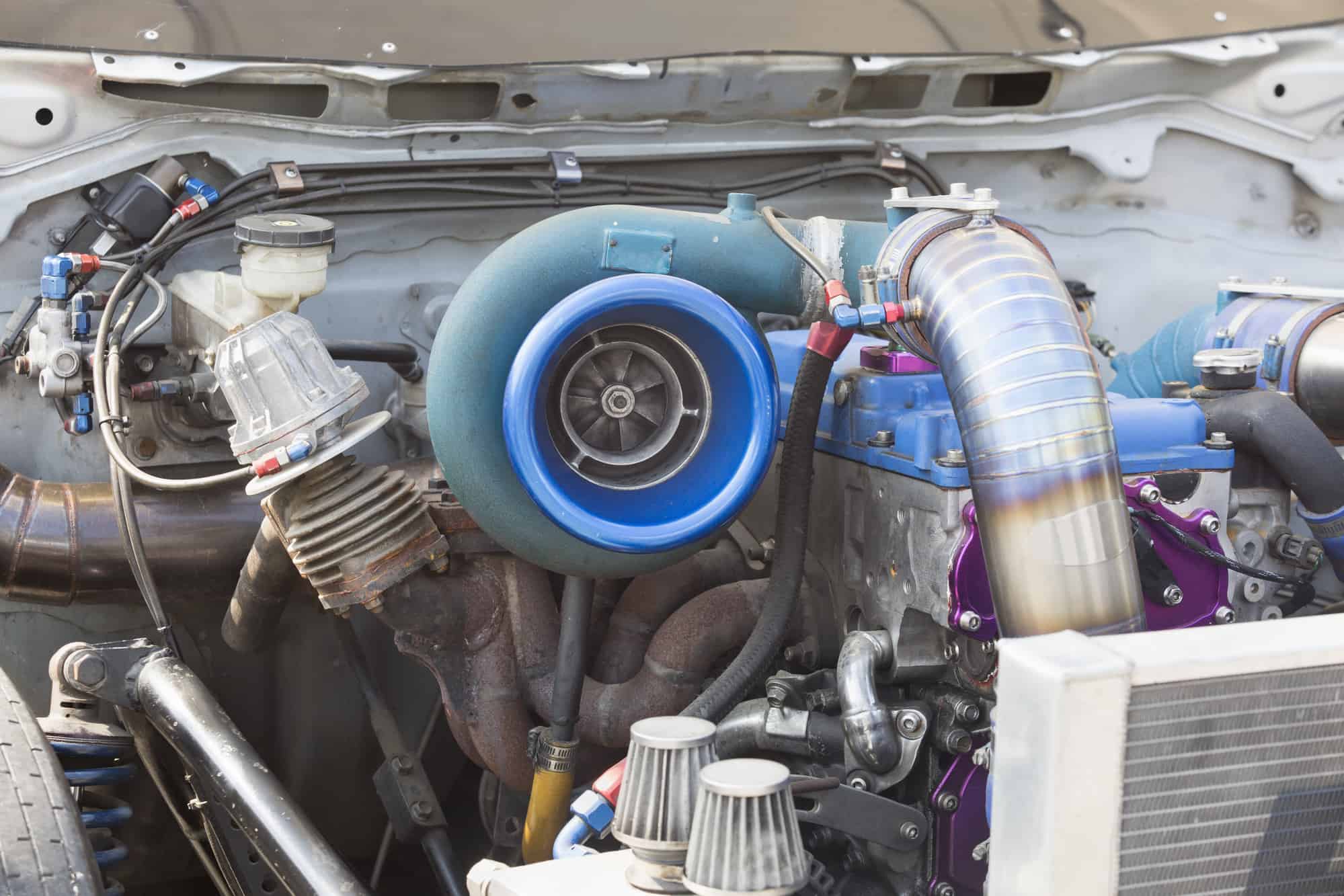What Does Code P0299 mean?
The engine code P0299 is stored in memory when the ECU detects a low boost pressure from the turbocharger (supercharger).
On vehicles equipped with a turbocharger (supercharger), the ECU is constantly monitoring the engine vacuum and intake manifold positive pressure using the MAP sensor and/or a boost pressure sensor.
This information is crucial for the ECU during Turbocharger/Supercharger boost control. The intake air pressure is directly related to the air/fuel stoichiometric ratio, that’s why the ECU has direct control over boost pressure.
The P0299 code is set when the ECU detects a Turbocharger/Supercharger boost pressure is lower than expected.
6 Common Symptoms When Code P0299 is Present
- Check Engine Light Lit
- Poor engine performance especially during wide open throttle acceleration.
- Poor fuel economy
- Increased emissions
- Possible engine misfires
- Possible Turbocharger/Supercharger whining noise.
Possible Causes For Error Code P0299
There are lots of common causes of engine trouble code P0299.
- MAP sensor wiring (open, shorted, burnt)
- MAP sensor connector (loosely, corroded, disconnected or bent pins)
- Boost pressure sensor wiring (open, shorted, burnt)
- Boost pressure sensor connector (loosely, corroded, disconnected or bent pins)
- Bad MAP sensor
- Bad boost pressure sensor
- Intake manifold air leaks.
- Highly clogged or restricted air filter
- Deficient Fuel Pressure System
- Bad or clogged Mass Air Flow sensor (MAF)
- Bad Turbocharger/Supercharger control solenoid(s)
- Exhaust manifold leak
- Bad Turbocharger/Supercharger
How To Diagnose The Engine Code P0299
For the purpose of this article, it’s assumed that you have a basic knowledge of safety precautions while working on your vehicle.
IMPORTANT: the diagnostic procedures listed below assume you only have the data trouble code P0299 present. If you also have any other code related to the ignition system, emissions system or fuel system then you should start diagnosing them first.
Always refer to the appropriate OEM literature when possible. Original manufacturer diagnostic procedures should always have precedence over a generic workflow.
That said, let’s start the diagnostic process!
1. Preliminary steps
To discard a possible intermittent DTC condition, you’ll need to clear the ECU memory and complete a driving cycle.
- Read data trouble codes and take note of them.
- Clear data trouble codes memory.
- Perform a driving cycle (at least 5-10 minutes).
In case the Check Engine Light stays off then you may have an intermittent problem. If the light lit during your driving cycle then continue with the diagnostic process.
2. Visual Inspection
> Vacuum hoses: perform a meticulous visual inspection of all vacuum lines, including MAP sensor, PCV, brakes vacuum booster, fuel pressure regulator, etc. Also, check the air intake hose looking for any sign of deterioration or leak.
> MAF condition: to inspect the MAF condition you will need to remove it from the vehicle first. Please refer to our MAF article for detailed instructions on how to diagnose and clean this important sensor.
> Manifold Absolute Pressure (MAP) Sensor wiring and connector: perform a meticulous visual inspection of the MAP sensor wiring and connectors. Look for burnt, damaged, corroded
or deteriorated wires, also unplug the sensor and look for bent terminal pins, loosely connections, corrosion or any other possible indication of a bad connection.
> Boost Pressure Sensor wiring and connector: perform a meticulous visual inspection of the boost pressure sensor wiring and connectors. Look for burnt, damaged, corroded or deteriorated wires, also unplug the sensor and look for bent terminal pins, loosely connections, corrosion or any other possible indication of a bad connection.
> Exhaust manifold/pipe: any leak in the exhaust, especially before the turbocharger will cause a sensible drop in boost pressure. That’s why is important to verify the exhaust pipe condition and repair any leak including a bad exhaust manifold gasket leak.
> Air Filter inspection: a clogged air filter could decrease the Turbocharger/Supercharger boost pressure significantly. Check the air filter condition and replace if necessary.
Fix any wiring problem before continuing.
3. Fuel System Tests
> Fuel Pump pressure: using the appropriate adapter connect a fuel pressure gauge to the engine test port and check the fuel pressure (engine off and engine running). Compare the values with the OEM literature. A lean condition may occur if the fuel pressure is not within its normal values. A low fuel pressure will cause a deficient fuel delivery and as a consequence a possible code P0299.
> Other Tests: a clogged fuel filter or even extremely dirty fuel injectors could also cause a low fuel pressure condition. Check the in-line fuel filter and the tank fuel filter element. Replace them as necessary. Checking the fuel injectors condition is difficult without a proper test bench, but check out our article on fuel injectors to learn more.
4. Electrical Tests
> MAP sensor reference voltage: In order to measure the reference voltage, you will need to enter in KOEO mode (Key On Engine Off) and turn the digital multimeter dial to “voltage” test mode. Now place one multimeter probe in a known ground (battery negative is a good one) and the other probe tip in one of the farthest terminals of the MAP sensor wiring harness.
If there is no voltage then keep the ground probe and touch the opposite terminal on the sensor harness. One of the outer terminals should read near 5V. That’s the nominal reference voltage coming directly from the ECU. If neither terminal shows voltage (or is below 4V) then you must check the wire continuity and resistance starting from each terminal all the way to the ECU. On the other hand, if you do find a terminal receiving 4.5V or more, mark it as the VREF wire.
> MAP sensor Ground test: this test assumes that you found a good reference voltage coming from the ECU. Once again, enter in KOEO mode (Key On Engine Off) turn the digital multimeter dial to “voltage” test mode and place one probe tip on each of the farthest harness terminals. You should read the same (or about the same) voltage than the previous test. A difference greater than 10% may indicate a poor ground. If that’s the case, you must check the electrical resistance from the harness terminal all the way down to the ECU.
> Boost pressure sensor test: depending on the year and manufacturer of your vehicle you may have different boost pressure sensor design. Refer to the appropriate OEM literature and perform the adequate electrical tests to check the sensor condition.
5. Scan Tool Tests
> Mass Air Flow Sensor: using a professional scan tool can save you significant time regarding MAF diagnostics. As mentioned earlier, refer to our MAF article for detailed instructions on how to diagnose this sensor. If the MAF filter is to blame, you may also get engine error code P0101.
> MAP Sensor live test: using an automotive diagnostic scanner you can perform a MAP live test. Connect your scan tool and enter in KOEO mode (Key On Engine Off). Select live data and lock the MAP sensor on screen. Now start your engine to enter KOER mode (Key On Engine Running). Compare the MAP reading at idle with the appropriate OEM literature. Increase engine RPM to 2500 and once again compare the MAP reading with the OEM literature.
> Boost Pressure Sensor live test: if your vehicle is equipped with a boost pressure sensor you can perform a live test very similar to the described above (MAP sensor). The only difference you may encounter is the unit base displayed in the scan tool. MAP sensor values are usually “absolute” readings while boost pressure reading may be expressed as a “relative” pressure. Check OEM literature for more information.
> Turbocharger/Supercharger Functional test: depending on the vehicle manufacturer and year you may have the option of performing Turbocharger/Supercharger functional tests. This test allows you to operate the Turbocharger/Supercharger wastegate/bypass-solenoid and control the amount of boost delivered to the engine. Refer to the appropriate OEM literature before proceeding, this test should be executed with a good knowledge of engine limits.
How To Repair Error Code P0299
Depending on the diagnostics results you may need to do the following:
- Repairing the MAP sensor wiring and/or connectors.
- Repairing the boost pressure sensor wiring and/or connectors.
- Replacing the MAP sensor
- Replacing the boost pressure sensor
- Repairing the exhaust pipe
- Replacing the air filter
- Repairing vacuum leaks
- Replacing the fuel pump, inline filter or other fuel system elements.
- Replacing the Turbocharger/Supercharger
This code may lead to turbocharger (supercharger) substitution. It’s advisable to hire a professional service for this job unless you feel confident about your skills.
How Does the P1682 Code Relate to the P0299 Code and Turbocharger/Supercharger Underboost Condition?
When diagnosing a P0299 turbocharger underboost code, it’s essential to consider the P1682 code as well. Solving the P1682 code, which relates to ignition 1 switch circuit malfunction, can potentially resolve the P0299 code by ensuring proper power supply to the turbocharger system.
How Can I Address the P0299 Code in My Chevy Malibu’s Turbocharger/Supercharger?
If you’re dealing with the P0299 code in your Chevy Malibu’s turbocharger/supercharger, it could be affecting your chevy malibu engine power. It’s crucial to have a professional diagnose and address the issue promptly to prevent further damage to your vehicle. Don’t ignore the warning signs and get it checked out.
Are the Causes and Solutions for P0299 and P0234 Turbocharger/Supercharger Codes Similar?
When it comes to decoding the P0234 overboost condition, the causes and solutions for P0299 and P0234 turbocharger/supercharger codes are indeed similar. Common causes include a faulty wastegate, boost pressure sensor issues, or a vacuum leak. Solutions might involve cleaning or replacing components, or repairing any leaks in the system.
Does a Throttle/Pedal Position Sensor Voltage Correlation Issue Affect the Turbocharger/Supercharger Underboost Condition?
When diagnosing a turbocharger or supercharger underboost condition, it’s crucial to consider the decoding throttle pedal position sensor voltage. A correlation issue with this sensor can lead to improper fuel delivery and affect the performance of the forced induction system. Proper voltage correlation is essential for optimal engine performance.
How Does P0097 Relate to Turbocharger/Supercharger Underboost Condition?
When your car’s computer detects a P0097 trouble code, it means there’s an issue with the intake air temperature sensor. This can lead to a turbocharger or supercharger underboost condition, causing decreased engine performance. Getting car performance trouble code explanations will help you understand and fix the problem.
P0299 Variations
Depending on the brand of car you are trying to diagnose, you may get a slightly different definition of P0299 from your OBD reader. Here are a few examples, all of which should be treated the same as the generic P0299 definition.
1. P0299 VW (Volkswagen) – Boost pressure regulation control range not reached
2. P0299 Chrysler – Boost In Range Low
3. P0299 Chevrolet – Turbocharge Engine Underboost
4. P0299 Ford – Turbo/Supercharger Underboost
5. P0299 GMC – Turbocharge Engine Underboost
Code P0299 Summary
- P0299 Technical Definition: Turbocharger/Supercharger A Underboost Condition
- P0299 Meaning: Turbocharger/Supercharger is not working properly
- Most common cause: Air (vacuum) leak, exhaust leak, bad Turbocharger/Supercharger
- Risks for the engine/driver: HIGH Don’t drive the car as you may damage engine components
- Emissions severity: HIGH. The car won’t pass emissions testing
- Estimated repair time: 2-3 days
- Estimated repair cost: $500+
As an Amazon Associate we earn from qualifying purchases.









Lately, my car has been showing poor fuel economy and poor engine performance, especially during acceleration. Could these issues be related to the P0299 engine code, and how can I confirm if this is the case?
I’ve been feeling that my car isn’t performing as well as it used to, especially during acceleration, and I’ve noticed a decrease in fuel economy. Could these symptoms indicate that my car is experiencing the P0299 error code?